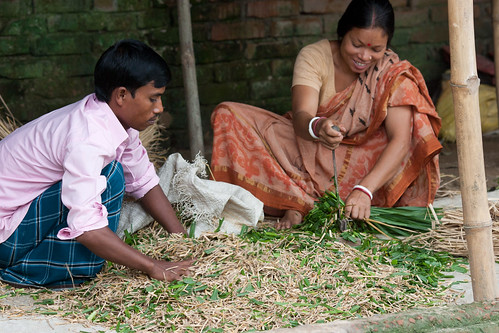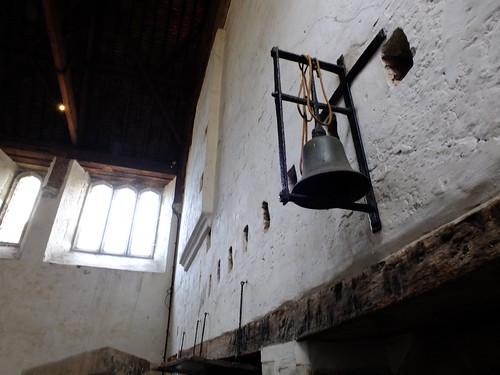Nice Family Meals photos
Some cool family meals images:
1968 Food Presentation, “Stupendous Sandwiches” (2-page layout)

Image by classic_film
Caption:
"Stupendous Double-decker Open-faced Sandwiches – Family-Pleasing, Oven-Hot Combinations of Meat, Seafood, Cheese and Vegetables – a Whole Meal on Two Slices of Bread"
Sandwiches shown (starting in upper left corner, going clockwise): Ham-cheese sandwich; liver pate and mushroom sandwich; Welsh-rabbit, egg and sausage sandwich; avocado, bacon and tomato sandwich; cheddar-cheese and tomato sandwich; piquant frankfurter sandwich; cheese, onion and bacon sandwich; crab-meat and asparagus sandwich
Published in Woman’s Day, September 1968, Vol 31 No. 12.
Fair use/no known copyright. If you use this photo, please provide attribution credit; not for commercial use (see Creative Commons license).
Success story for farming family in Bangladesh working with CIMMYT

Image by CIMMYT
Bangladeshi farmer Gopal Mohanta and his wife work together cutting up feed for their livestock. They did not previously have animals, but were able to buy them thanks to a dramatic improvement in their livelihood after they began to work with CIMMYT. They now grow a variety of crops that meet their food and feed needs, and each day prepare and mix a balanced meal for their animals.
The family’s fortunes began to change when Mohanta attended a farmer training session provided by CIMMYT in collaboration with partners in Bangladesh. This opened a door for him to take advantage of a range of resources from CIMMYT and its partners—including seed, technologies, and practices—and to combine these with the family’s own hard work and talent.
One of the changes Mohanta made was to plant a more diverse range of crops, and in 2005 he planted maize for the first time, using improved seed based on CIMMYT materials. He achieves high yields of 12-13 t/ha, which he is able to sell at a good profit, as a growing market is fueling high and stable maize prices in Bangladesh. As well as being able to invest in livestock and other farm diversification, such as a pond stocked with fish, the increased income has brought other benefits for the family. Mohanta and his wife have built a new, larger house and are able to provide a better education for their two children.
The family has come a long way, providing a shining example of what is possible to others in their community of Boiragee, Dinajpur. However, the success story is far from over; looking to the future, Mohanta plans to buy more land and to plant more crops.
Photo credit: S. Mojumder/Drik/CIMMYT.
For the latest on CIMMYT in Bangladesh, see CIMMYT’s blog at: blog.cimmyt.org/?tag=bangladesh.
Inside the Great Kitchens

Image by failing_angel
Built 1530, the kitchens would provide two meals a day for 600 members of the Tudor court.
The annual provision of meat for the Tudor court stood at 1,240 oxen, 8,200 sheep, 2,330 deer, 760 calves, 1,870 pigs and 53 wild boar [Hampton Court Palace website].
Hampton Court Palace began with Cardinal Thomas Wolsey (c.1473-1530) acquiring what was then a grange from the Order of St John (the Knights Hospitaller) in 1514 and redeveloping it as a palace. The new palace included the Base Court (which included 40 guest lodgings), and the inner Clock Court (which had state apartments for Henry VIII, Katherine of Aragon and the Princess Mary). The palace was used for hosting state functions such as diplomatic visits as well as entertainments.
In 1529 Hampton Court passed to Henry following Wolsey’s downfall, at which point Henry built upon and developed an already substantial palace. The new complex included larger kitchens, a chapel and great hall, as well as tennis courts, a bowling alley and tiltyard. Starting less than 6 months of taking possession, Henry’s works weren’t complete until 1540.
Each of Henry’s heirs stayed at Hampton Court (indeed Edward VI was born there), although only Elizabeth I made any changes and those were relatively minor; this was similar under the Stuarts, with the next changes to the palace happening with William and Mary.
Sir Christopher Wren (1632-1723) was comissioned to design a new palace, but the cost of demolishing the existing building was too prohibitive, instead the east and south sides were rebuilt.
The last phase of construction happened with the Hanoverians, with Sir John Vanbrugh (1664-1726) designing the Queen’s apartments under George I, and William Kent (c. 1685-1748) the Queen’s staircase and Cumberland Suite under George II.
The royal family left Hampton Court in 1737, after which time the palace became grace and favour apartments for a century, before being opened to the public by Queen Victoria.
Comments
Leave a Reply





